How Chemical Engineering relates to the environment?
Chemical Engineering, in a nutshell, requires engineers to design chemical plant equipment and construct product manufacturing methods. Chemical engineers can be found in various industries, including biotechnology, pharmaceuticals, healthcare, petrochemicals, and polymers.
Aside from the traditional role of improving operating systems, chemical engineers also work to solve pressing environmental issues. A crucial aspect of this is Environmental Monitoring, which is the practice of assessing environmental parameters that indicate toxicity, chemical composition, and other similar aspects. In the fight to minimize hazardous effects on the environment, Environmental Monitoring is becoming increasingly important.
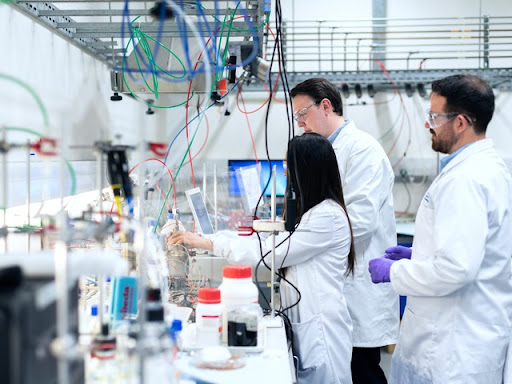
So, how does Machine Learning fit in?
The use of Artificial Intelligence (AI) and Machine Learning (ML) in Environmental Monitoring has brought it into the 21st century. Early models relied on individual sensors and other tools to observe the environment, leaving it up to the engineers to collate the data and determine trends. New technologies for environmental monitoring, however, are classified as the Internet of Things (IoT): a network of tangible “things” equipped with software, sensors, and other technologies to partake in data exchange. IoT scenarios typically involve devices spread over a region to measure various physical quantities, such as Temperature and CO2 levels[15]. Once collected, the data is sent periodically to a cloud-based network to be monitored and analyzed to gain actionable insights[6].
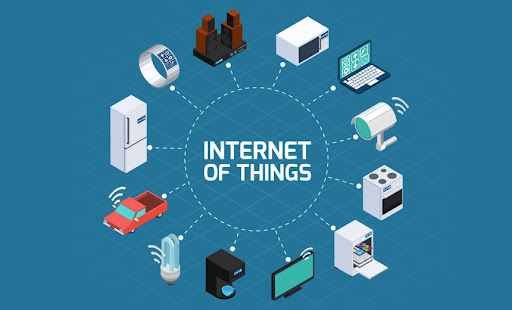
Air pollution is defined as a deterioration of the environment. It is a severe environmental concern, one which directly (and in some cases acutely) affects health globally. Pollutants are known to cause thick, poisonous fog in several areas, and is not only linked to long-term health issues, but also up to 800,000 premature deaths as of 2005[19].
Fortunately, IoT provides a modern solution to tackle this issue. The atmosphere’s composition is monitored worldwide using IoT devices, which are paired with AI forecasting algorithms. The data is then collected and analyzed to extract future trends, which allows chemical engineers to devise strategies and policies based on this information.
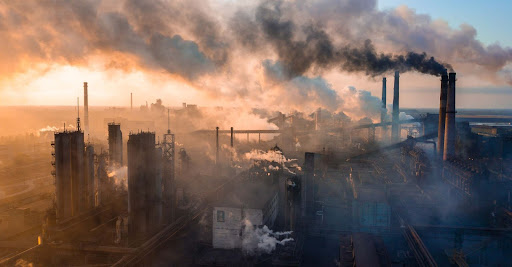
So, how does this work? Currently, there are public datasets containing environmental data collected from the U.S. Environmental Protection Agency (EPA) throughout the country available in epa_historical_air_quality[9]. To assess the air quality over a region, this data is plugged into a multivariate time series forecasting model, which is implemented on public cloud platforms such as GCP using forecasting tools such as Prophet library[5].
Another increasingly powerful method to track climate change is to accumulate Satellite data in Google Cloud and Climate Engine. Google and NASA also collaborate to study the effects of climate change by collecting data from NASA satellites and analyzing them using Google computational resources[16]. Satellites and computers working together to make the world a better place! It sounds like the stuff of science fiction, and yet it’s a reality of today.
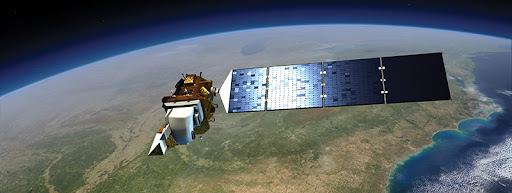
What does the IoT system’s functionality look like?
The figure below depicts how an IoT system is used to monitor climate change. The architecture contains two layers; a device layer to collect data using sensor devices, and a network layer to transmit data to the platform where it can be stored, processed, analyzed, and reported.
GCP Pub/Sub service is used to ingest data from the devices in real-time, alongside Cloud Monitoring and Logging. Meanwhile, Cloud Dataflow processing service allows data to be stored in a Cloud Storage system, or analyzed through BigQuery or GEE. The data can then be accessed by AI/ML Tools, such as Prophet from Vertex AI, to gain insights and develop strategies.
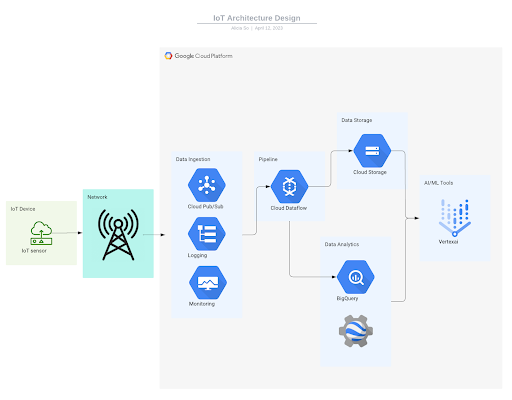
Conclusion
The quality of the air we breathe is an issue that affects everyone. Machine learning has become an essential tool in helping chemical engineers fight air pollution, helping facilitate the application of statistical tools to accelerate the synthesis of improved processes and methods. AI/ML, along with traditional scientific modeling software in chemical engineering, can be applied to study trends in environmental parameters and pollutants, making it easier than ever to collect and study data from several sources and determine trends, thus allowing chemical engineers to make more informed decisions to make life better for the world’s population.
References
- AlChE. (2020, July 23). What do Chemical Engineers Do? AIChE K-12 Community. Retrieved March 31, 2023, from https://www.aiche.org
- Bikmukhametov, T., & Jäschke, J. (2020, July 20). Combining machine learning and process engineering physics towards enhanced accuracy and explainability of data-driven models. Computers & Chemical Engineering. Retrieved March 31, 2023, from https://www.sciencedirect.com
- [Chemical Engineering]. (n.d.). [Photograph]. Retrieved April 11, 2023. Science Buddies. https://careerdiscovery.sciencebuddies.org
- Climate Engine. (n.d.). Earth Insights for Economic Resilience. Climate Engine. Retrieved March 31, 2023, from https://climateengine.com/
- Cohan, A. (2020, July 28). Predicting Air Pollution with Prophet on GCP. Medium. Retrieved March 31, 2023, from https://towardsdatascience.com
- Diaz, M. (2022, October 5). Machine Learning in Environmental Monitoring. Retrieved March 31, 2023, from https://gemmo.ai
- Forecasting at scale. Prophet. (n.d.). Retrieved March 31, 2023, from https://facebook.github.io
- Google. (2023, March 29). Multivariate time-series forecasting from Seattle air quality data. Google Cloud. Retrieved March 31, 2023, from https://cloud.google.com/bigquery
- Google. (n.d.). A planetary-scale platform for Earth science data & analysis. Google Earth Engine. Retrieved March 31, 2023, from https://earthengine.google.com
- IQAir Staff Writers. (2022). [Air Pollution] [Photograph]. Retrieved April 11, 2023. IQAir. https://www.iqair.com
- Leveraging google geospatial ai to prepare for Climate resilience. Google. (2021, June 8). Retrieved March 31, 2023, from https://cloud.google.com
- [NASA Satellite Monitors Climate Change]. (2015). [Image]. Retrieved April 11, 2023. NASA. https://spinoff.nasa.gov
- NKD, F. (2020). [Internet of Things] [Digital Image]. Retrieved April 11, 2023. Logique. https://www.logique.co.id
- Oracle. (n.d.). What is the internet of things (IOT)? Internet of Things. Retrieved March 31, 2023, from https://www.oracle.com
- Stacktics. (n.d.). Internet of Things (IOT) Services. IOT. Retrieved March 31, 2023, from https://stacktics.com/iot
- Tuxen-Bettman, K., Kavvada, A., & Clinton, N. (2022, September 16). How NASA and Google are teaming up to understand and analyze air quality around the world. Medium. Retrieved March 31, 2023, from https://medium.com/google-earth
- U.S. Bureau of Labor Statistics. (2022, March 31). Occupational Employment and Wages, May 2021. Occupational Employment and Wage Statistics. Retrieved March 31, 2023, from https://www.bls.gov
- Werner, S. (2021, November 26). Chemical process models – from First Principle to hybrid models. Navigance. Retrieved March 31, 2023, from https://blog.navigance.com
- Cohen AJ, Ross Anderson H, Ostro B, Pandey KD, Krzyzanowski M, Künzli N, Gutschmidt K, Pope A, Romieu I, Samet JM, Smith K. The global burden of disease due to outdoor air pollution. J Toxicol Environ Health A. 2005 Jul 9-23;68(13-14):1301-7. doi: 10.1080/15287390590936166. PMID: 16024504. Retrieved May 9, 2023 from https://pubmed.ncbi.nlm.nih.gov




